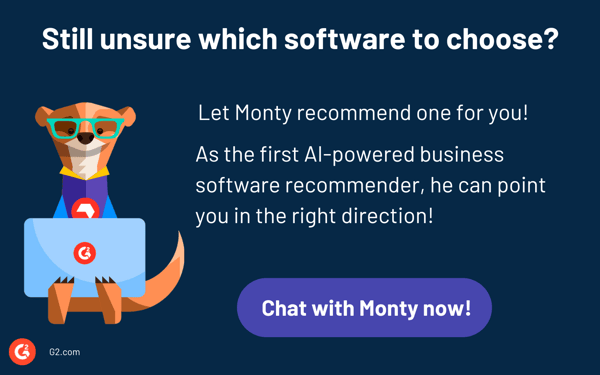As a marketer, you know the inbox is a competitive place.
Your email is just one of dozens, maybe hundreds, that your audience receives every day. And unless that email is relevant, trusted, and timely, it’s going straight to the trash, or worse, the spam folder.
That’s why permission-based email marketing matters more than ever. Also known as opt-in email marketing, this strategy ensures that you only send emails to contacts who’ve actively agreed to hear from you. That might be through a sign-up form, a newsletter opt-in, or a confirmation link. No matter how they join your list, the key is consent, not assumption.
This isn’t just about compliance (though we’ll cover that too). It’s about building stronger relationships, improving deliverability, and increasing the ROI of every campaign. Because when someone actually wants your email, they’re far more likely to open it, click through, and take action.
What is permission-based email marketing?
Permission-based email marketing is a strategy where businesses send emails only to users who have explicitly opted in. It builds trust, reduces spam complaints, and improves engagement rates. Subscribers willingly share their contact details, ensuring higher open rates, better deliverability, and compliance with privacy laws like GDPR.
In most cases, customers check a box on the company’s website or follow a link to sign up. This consent allows businesses to create a permission-based list, which is a list of contacts that agree to receive marketing and promotional emails.
Think of email marketing like door-to-door sales. A random salesperson turns up at your door – to offer you unsolicited advice and try to get you to sign up for their product or service. Without your permission for them to be there, you’re probably not moving ahead, perhaps not even answering the door.
Permission-based marketing does the opposite. Instead of arriving in your inbox unwanted and unannounced, these emails are like the pizza delivery dude, who is always welcome in your home.
Trust has already been established, which is crucial when you want to reach potential customers. The best email marketing software connects directly to customer relationship management (CRM) tools to help businesses track encounters across all marketing touchpoints and, hopefully, turn leads into buyers.
You can also use the best email tracking software to track engagement, fine-tune your strategy, and deliver results that matter.
TL;DR: Everything you need to know about permission-based email marketing
- What is permission-based email marketing? It’s an opt-in email strategy where you only send campaigns to people who explicitly consent, improving trust and ROI.
- How does opt-in email marketing improve deliverability? When subscribers actually want your emails, they open and click more. Email providers see this engagement and keep you out of the spam folder.
- What’s the difference between express and implied consent? Express consent means someone clearly says yes via a sign-up form or confirmation email. Implied consent comes from an existing relationship (like a purchase) but may expire.
- Do you need double opt-in for compliance? It’s not legally required but strongly recommended to meet GDPR standards, reduce fake sign-ups, and prove explicit consent.
- What are the best practices for ethical email marketing? Use clear sign-up forms, respect unsubscribe requests, never buy email lists, and pick an ESP that automates consent logging.
- Which email platforms support permission-based campaigns? Tools like Mailchimp, Constant Contact, and MailerLite let you enable double opt-in, manage GDPR fields, and segment subscribers easily.
Why is permission-based email marketing important?
Email marketing has long been one of the most important marketing channels for online and offline businesses. Inboxes represent a personal space, much more so than showing ads on social media or sending a flier in the mail.
As a consequence, businesses must prioritize getting permission to enter that space. The numerous benefits of email marketing are only amplified when those efforts come with consent.
Opt-in emails increase conversations
When customers opt to receive your emails, that means they actually want to hear from you! The chances of them opening the emails, clicking the links, and eventually making a purchase from your business grow much higher than if you blindly sent emails to thousands of people who never signed up to receive them and simply hit “delete.”
Consent equals compliance
Did you know that if you send emails to customers without permission, you could be fined by the Federal Trade Commission (FTC) due to the CAN-SPAM Act? And if you’re sending emails to Europe or Canada, those fines could be even higher thanks to GDPR regulations or Canada under Canadian Anti-Spam Legislation (CASL).
These legal requirements have been put in place globally to protect consumer information and privacy. But even if you’re only marketing within the US, it’s still best to operate with an opt-in system for all email marketing.
Permission means better deliverability
Once your customers join your mailing list, they’re more likely to open your promotions. Email providers pay attention to this and accordingly send your emails to spam (boo) or the inbox (yay). Permission-based marketing thus increases the deliverability of future communications.
How much better is opt-in email ROI?
Still wondering if opt-in email marketing really pays off? The benchmarks speak for themselves:
| Metric | Opt-in list | Purchase/cold list |
| Open rate | 20–35% | 5–10% |
| Click-through rate | 2–5% | <1% |
| Conversion rate | 4–6x higher | Low or negligible |
| Unsubscribe rate | <0.2% | Much higher |
Want even higher engagement? Segment opt-in subscribers by behavior and send personalized campaigns. Freshly confirmed subscribers can hit 40%+ open rates.
What types of permission exist?
The key to permission-based email marketing is in the title – permission! But even within this, there are different types of allowances that businesses can take to add individuals to an email marketing list and send out communications.
Express consent
Express consent means that someone clearly says “yes, you may have my email address to send me marketing information.” Typically, the individual does so in writing or by taking an action to allow this, like checking a consent box or filling out an opt-in form online.
This is explicit opt-in. Your subscriber:
- Checks a sign-up box (“Yes, send me updates”)
- Fills out a newsletter form
- Clicks a confirmation email
Express consent is crystal clear. There’s no confusion. They want your emails.
Example: Someone signs up for your webinar, then confirms via email. That’s airtight express consent.
Implied consent
Implied consent, while valid for giving permission, this level of opt-in doesn’t require customers to do anything that specifically says they want to receive marketing emails. Organizations usually get implied consent by collecting customer emails as a part of business operations, like when they buy a product from the website or reach out for support.
Examples:
- They bought something from your online store
- They contacted your support team
It’s valid in some regions (like Canada, for 2 years post-purchase), but it’s weaker. And under GDPR, it’s not enough — you still need express consent.
Pro tip: Even if implied consent is allowed where you are, aim for explicit opt-in. It’s safer legally, and it builds stronger trust.
For example, e-commerce stores often add customers to a list as soon as they make a purchase, even if they don’t check a box stating that they gave permission to do so. The consent has been implied through previous customer actions.
What are the best practices for permission-based email marketing?
Whether you’re getting started with permission-based marketing for the first time or looking to revamp your existing system, creating an effective, efficient opt-in process will prove to be worth the effort you put in upfront. It’s better for your customers and their information privacy, and it’s better for your marketing team when it comes to categorizing leads and customers.
Use a double opt-in process
No matter how your customers sign up, consider implementing a double opt-in system that moves them through a two-stage process before being added to your email marketing list.
For instance, they could enter their email via an opt-in form on your website, which provides initial consent. From there, your marketing team sends an email asking them to click a button to confirm their registration. Once they’ve clicked the button, they’re added to the marketing list.
Double opt-ins filter out inaccurate email addresses, and that reduces how much you’re sending and lowers your spam bounceback. The two-step system also confirms that customers are actually giving explicit consent.
Never buy an email list
Buying a list of names and email addresses and then sending communications without any type of permission from those people has emerged as one of the worst approaches to online marketing. Unless you want to receive fines for lack of compliance with data privacy laws and also create friction with potential customers that can cause long-term reputational damage for your brand, don’t add anyone to your list who hasn’t given you the okay.
Make the subscribe button clear
It’s easy to panic when people start unsubscribing from your emails, but it’s not the worst thing. Those customers likely don’t fit your business and possibly aren’t even reading your emails, let alone opening them.
If you’re paying to send emails based on subscriber numbers, those uninterested people are taking up space and costing you money with little chance of a return. Curating a list of interested, engaged people works out much better for deliverability, increases your open and click rates, and, ultimately, encourages purchase.
Let people know what to expect
Not all email marketing needs to be a hard sell. In fact, that’s probably not the best approach. If you plan to send helpful resources or other information, let your base know ahead of time. In your welcome email, share details about what kinds of information they can expect from you, along with the frequency of messages.
Step-by-step: How to set up permission-based email marketing
Here’s how to collect and manage consent without the headache:
- Decide on consent type. Prefer express consent for clear, legal-proof opt-ins. If you rely on implied consent, document when and why you collected the email (e.g., purchase date, support inquiry).
- Create a transparent sign-up form. Use plain, trust-building language like “Sign up for weekly tips and deals. No spam, ever.” Always include a link to your privacy policy.
- Enable double opt-in. After signup, send a confirmation email with a “Click to confirm your subscription” button. Only add them to your main list once they confirm.
- Tag and segment subscribers. Label users as “double opt-in confirmed” or “single opt-in” so you can track and manage list quality.
- Send a friendly welcome email. Remind subscribers what they signed up for, how often they’ll hear from you, and that they can unsubscribe anytime.
- Keep consent records. Store timestamps, IP addresses, and sign-up sources. Most email platforms automate this for compliance.
Legal compliance checklist by region
Different countries, different laws.
| Region | Key law | What’s required | Max fine |
| United States | CAN-SPAM Act | Clear opt-out, no deceptive subject lines, physical address required | $50,120 per email |
| European Union | GDPR | Explicit opt-in, proof of consent, right to delete | €20M or 4% global revenue |
| Canada | CASL | Express or implied consent (expires after 2 years) | $10M CAD |
| Australia | Spam Act 2003 | Consent required + accurate sender ID | $220,000 AUD+ |
Top 5 email marketing software tools
Gone are the days of sending emails one at a time or importing a spreadsheet into your email provider to complete a mail merge in batches of 500. Nowadays, email marketing software makes it quick and easy to send messages to thousands of people at once, whether that’s all from a single list or based on segmented groups arranged by interests.
To be included in the email marketing category on G2, platforms must:
- Enable the creation and sending of emails via HTML or WYSIWYG editor
- Provide email templates
- Allow users to preview and send test emails
- Store, track, segment, and manage email contact lists
- Provide campaign-based reporting and analytics
- Limit marketing automation features to email as their core function
* Below are the top five leading email marketing software solutions from G2’s Summer 2025 Grid Report. Some reviews may be edited for clarity.
1. Constant Contact
Constant Contact helps small to medium businesses simplify and grow their digital marketing. With tools to build landing pages, send communications to customers via email and text, and sync with other business tools, Constant Contact empowers teams to create a more engaged connection with their audience.
What G2 users like best:
“Constant Contact has transformed communications and marketing for our small non-profit organization. Professional email appearance has raised our organizational reputation. Tracking capabilities help us understand who is seeing our emails and who is not. Management of our segmented contact lists is smooth and effortless!
Plus, we use Constant Contact landing pages with sign-up forms to track member event registration, merchandise orders, and drive traffic to our online payment accounts.
If we run into problems, Customer Support is always prompt and courteous.”
– Constant Contact Review, Edward H.
What G2 users dislike:
“I found Constant Contact very difficult to set up. The process of moving around the boxes and formatting the HTML was extremely slow and challenging, which contributed to a steep learning curve. Additionally, the dashboard has become overly complicated, providing too many options which are not intuitive and clutter my workspace. I dislike that there’s no easy way to turn off unnecessary options, making the interface less user-friendly. Furthermore, the software seems to be getting more complex rather than simpler, which is frustrating. I also find it too expensive for what it offers, especially since I do all the work inputting everything myself. The image library is also difficult to use, and the software is not speedy enough, making it unsuitable for an average user.”
– Constant Contact Review, Steven E.
2. Brevo Marketing Platform
Brevo helps businesses streamline multichannel marketing through email, SMS, chat, and automation, all from a single platform. With customizable templates, a drag-and-drop editor, and built-in CRM capabilities, Brevo makes it easy to personalize campaigns at scale. The platform integrates with tools like Shopify, WordPress, and Salesforce to centralize customer data and boost campaign performance.
What G2 users like best:
“Brevo offers a clean, intuitive interface that makes it easy to create beautiful email campaigns and automate workflows. The built-in CRM, customizable templates, drag-and-drop editor, and audience segmentation tools make campaign management seamless. I also really appreciate the competitive pricing and flexible plans for growing businesses.”
– Brevo Marketing Platform Review, Squib L.
What G2 users dislike:
“Brevo supports basic if/else conditions in automations but does not allow nested logic (no if inside if). You can create simple split paths, but complex workflows require awkward workarounds like multiple automations or segments. There’s no support for multi-condition branches or deeply personalized flows. For advanced automation logic, other tools are more flexible.”
– Brevo Marketing Platform Review, Joe M.
3. Intuit Mailchimp
As one of the leading email marketing platforms, Intuit Mailchimp provides list management, templated emails, and automated integrations that allow businesses to send engaging content to their customers all over the world. With new AI features, Mailchimp customers can implement marketing solutions across a range of channels using shared data from other parts of their marketing ecosystem.
What G2 users like best:
“It is extremely simple and easy to use. Very straightforward design, and has all the extras we need for targeting, reporting, and delivering a quality product to our clients. We use this program nearly every day, and it really helps us target our client audiences with precision and accuracy. The reporting is superior to many other programs we use, and it is easy to find answers, trends, and results from all of our activities.”
– Intuit Mailchimp Review, Tom B.
What G2 users dislike:
“Sometimes, formatting within templates can be a little challenging. Implementation can be a little bit challenging but when it is implemented, anyone should be able to figure it out.”
– Intuit Mailchimp Review, Samantha van N.
4. Apollo.io
Apollo.io is a sales and marketing platform that helps teams streamline outreach with access to a vast B2B contact database, automated email sequences, and engagement tracking. It combines lead generation, CRM features, and email automation in one platform, allowing users to build targeted lists, personalize communication at scale, and optimize campaigns with performance analytics.
What G2 users like best:
“The quality and depth of the contact database is, without a doubt, the best feature. The search filters are incredibly granular, allowing us to build hyper-targeted lists of ideal prospects. The high accuracy of the verified email addresses saves us countless hours and dramatically improves the effectiveness of our outreach campaigns.“
– Apollo.io Review, Vinicius K.
What G2 users dislike:
“While Apollo.io is highly effective, there’s still room to improve the accuracy and freshness of certain contact data to reduce bounce rates. Additionally, introducing more real-time data validation and enriching incomplete profiles would make prospecting even more reliable. A few advanced automation triggers for follow-ups could also further streamline outreach.”
– Apollo.io Review, Ashish S.
5. Systeme.io
Systeme.io is an all-in-one marketing platform that lets businesses build sales funnels, send automated emails to their customers, run affiliate programs, and automate repetitive tasks that take up unnecessary time. Ideal for small to medium businesses, the software helps companies scale their online operations.
What G2 users like best:
“I appreciate how Systeme.io is forward-thinking and adding new elements to their offerings every week. What users get for the price point is amazing! And the free migration of my old website to Systeme.io was a huge blessing. As a solopreneur, it is very difficult to manage all of the tasks on my plate. Knowing that Mohamed was migrating my website for me was incredible!”
– Systeme.io Review, Emily J.
What G2 users dislike:
“Like any SaaS, Systeme.io has its limitations. For me, the biggest drawback is the restricted question feature in courses, it only supports multiple-choice questions. I’m used to having optons like essay responses and file uploads for assessments, which aren’t available here. That said, there are workarounds for this, so it hasn’t been a major issue for me.”
– Systeme.io Review, Kirti S.
Permission based email marketing: Frequently asked questions (FAQs)
Have more questions? Find the answers below.
Q1. What’s the difference between express and implied consent?
The main difference between express and implied consent is clarity. Express consent is explicit and documented, such as signing a form or ticking a checkbox. Implied consent is inferred from actions or circumstances, like continuing a service. Express consent provides stronger legal protection, while implied consent is less certain.
Q2. Is double opt‑in necessary?
Double opt-in is not legally required but is highly recommended. It confirms a subscriber’s email address through a verification link, reducing fake sign-ups and improving list quality. Double opt-in enhances engagement, lowers spam complaints, and ensures compliance with stricter privacy laws, offering better deliverability and trust.
Q3. Can I legally buy an email list?
You can legally buy an email list in some regions, but sending emails to it may violate privacy laws like GDPR or CAN-SPAM. Purchased lists lack explicit consent, increasing spam complaints and risking legal penalties. Building a permission-based list ensures compliance, higher engagement, and better email deliverability.
Q4. How do I improve email deliverability using opt‑in?
Improve email deliverability using opt-in by collecting addresses through single or double opt-in methods. Double opt-in verifies subscriber intent, reducing fake sign-ups and bounce rates. Clear consent lowers spam complaints, improves sender reputation, and increases inbox placement. Always maintain a clean, engaged list for consistent deliverability.
Q5. Can I email someone who bought from me without explicit consent?
You can email someone who bought from you without explicit consent under the soft opt-in rule in many regions. It applies when the email relates to similar products or services, and the buyer had an easy opt-out option. However, stricter laws like GDPR may still require clear consent.
Put your customers in the driving seat
Sending frequent emails to your customers increases sales and builds long-term connections with the people who support your business. But if they haven’t given you permission to slide into their DMs, think twice before hitting the “send” button. Earn their enthusiastic consent so they always trust your emails and give them plenty of reasons to click through.
Need support for your email marketing efforts? Find outsourced email marketing services to help you send better communications and connect with your customers more frequently.
This article was originally published in 2024. It has been updated with new information.















